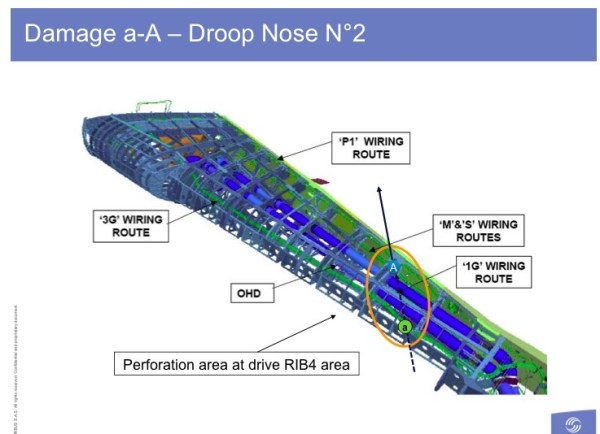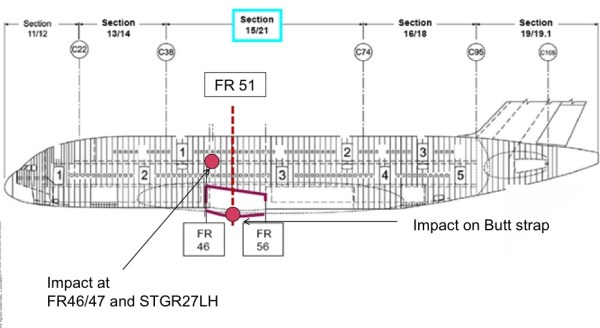 The Airbus presentation to accident investigators of the damage done to QF32 on November 4 gives new technical insights into this near disaster involving a Qantas A380 with 466 persons on board.
The Airbus presentation to accident investigators of the damage done to QF32 on November 4 gives new technical insights into this near disaster involving a Qantas A380 with 466 persons on board.
The examination of the damage is far from complete, as the presentation makes clear. It doesn’t deal with the other dimensions of this serious incident, which are the loss or impairment of various systems on the giant airliner, and the emerging difficulties the crew faced from fuel load imbalance caused by some of those failures.



One thing needs to be kept firmly in mind. Rolls-Royce the maker of the Trent 900 engine which disintegrated knew about the faults that the current airworthiness directive concerning these engines says are likely to have caused an intense oil fire in a structural cavity in the intermediate pressure turbine area of the engine.
Rolls-Royce had designed and was introducing a fix for the oil leak issues for this into the engines at its own speed. Qantas was left in the dark. It is fair to suggest that Qantas needs to review relationships with engine manufacturers in which it pays for power by-the-hour and leaves much of the maintenance and oversight of those engines to the designer and manufacturer.
To emphasise the obvious. The interests of the engine maker and holder of the service agreements are not the same as those of the airline. A carrier might want to correct and replace inadequate design features to a different, more urgent timetable that the party that benefits from the support contract, and has its own brand image to protect.




 The set of graphics shown above were accompanied by a brief written and photographic overview of the damage as currently assessed.
The set of graphics shown above were accompanied by a brief written and photographic overview of the damage as currently assessed. 




 Reviewing these images makes it clear why Qantas was quick, and correct, in grounding its A380 fleet.
Reviewing these images makes it clear why Qantas was quick, and correct, in grounding its A380 fleet.
The wing of the jet shows remarkable structural strength in sustaining damage that might have destroyed the airliners of earlier decades, but the questions as to whether control system revisions are necessary to deal with some of the consequences in terms of failed hydraulics and fuel imbalance are said to be very actively under consideration.
And the questions concerning the timeliness of the Rolls-Royce responses to a known problem, and its capacity and willingness to share them with the airlines concerned will not go away. If the engine maker doesn’t address them its customers will.







Crikey is committed to hosting lively discussions. Help us keep the conversation useful, interesting and welcoming. We aim to publish comments quickly in the interest of promoting robust conversation, but we’re a small team and we deploy filters to protect against legal risk. Occasionally your comment may be held up while we review, but we’re working as fast as we can to keep the conversation rolling.
The Crikey comment section is members-only content. Please subscribe to leave a comment.
The Crikey comment section is members-only content. Please login to leave a comment.